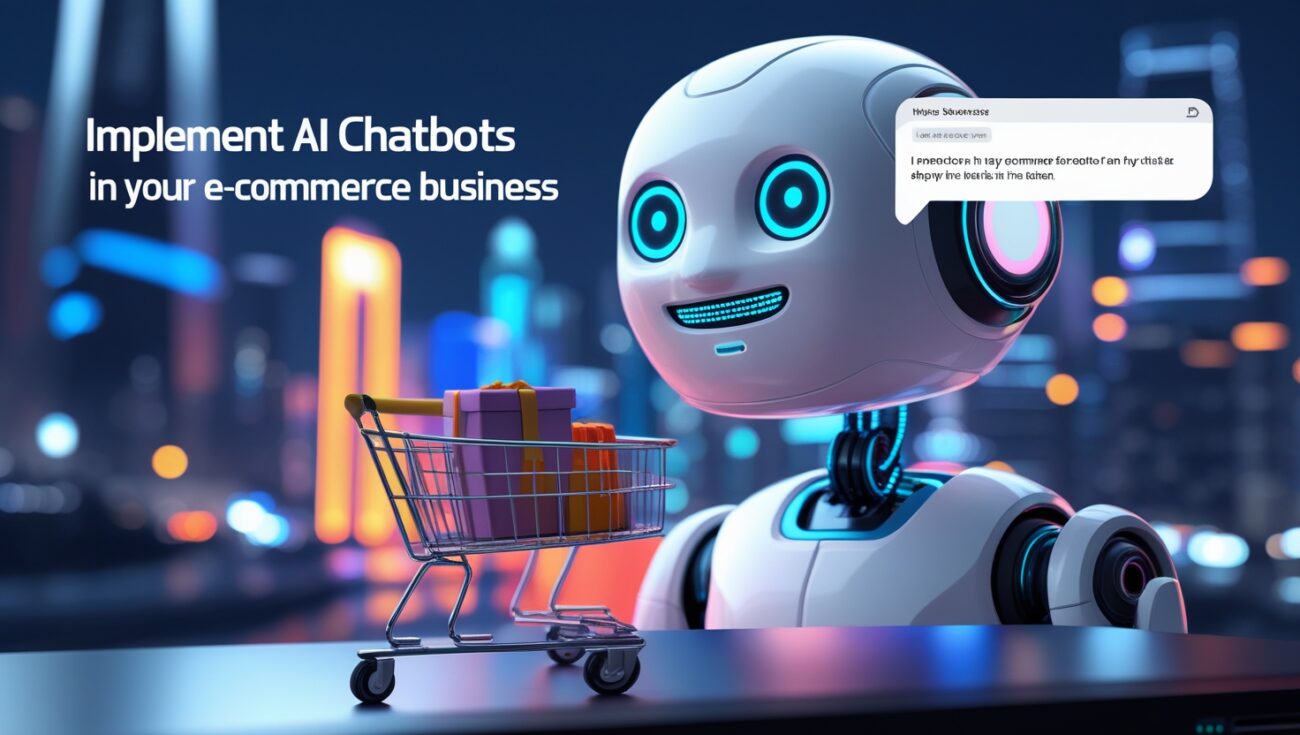How to Implement AI Chatbots in Your E-commerce Business
AI chatbots have become an essential tool for e-commerce businesses looking to enhance customer service, boost sales, and improve efficiency. With AI, you can provide instant support, personalized recommendations, and automate repetitive tasks — all while saving time and resources.
If you want to optimize your content strategy alongside chatbot implementation, I recommend using Frase. It helps me create SEO-friendly content and FAQs that integrate seamlessly with AI-powered customer experiences.

Table of Contents
Why AI Chatbots Are Important for E-commerce
Modern shoppers expect 24/7 customer support. AI chatbots can answer questions instantly, guide users through the buying process, and even suggest complementary products. This improves customer satisfaction and increases conversion rates.
Chatbots can handle multiple customers at once, ensuring no one waits in a queue. For e-commerce stores, this means higher efficiency and the ability to scale customer service without adding staff.
Key Steps to Implement AI Chatbots
1. Identify Use Cases
Start by defining what you want your chatbot to achieve. Common e-commerce use cases include answering FAQs, tracking orders, providing product recommendations, and assisting with returns.
2. Choose the Right AI Chatbot Platform
Select a platform that integrates with your e-commerce system and supports AI-driven personalization. Many platforms now offer natural language processing (NLP) to make interactions more human-like.
3. Train Your Chatbot
Provide your chatbot with product information, FAQs, and common customer queries. The more data it has, the smarter it becomes. Tools like Frase can help you organize content and ensure your chatbot delivers accurate and helpful responses.
4. Personalize Interactions
Use AI to analyze customer behavior and tailor recommendations. Personalized interactions increase engagement and encourage customers to complete purchases.
5. Monitor and Improve
Regularly review chatbot interactions to identify areas for improvement. Update responses, add new FAQs, and optimize workflows to enhance the customer experience.
Benefits of AI Chatbots
- Instant customer support 24/7
- Personalized product recommendations
- Reduced operational costs
- Increased sales and conversion rates
- Scalability for growing e-commerce stores
How I Use AI Chatbots in My Store
I integrate chatbots to handle routine queries like shipping policies, return instructions, and product availability. This frees up my time to focus on strategy and growth.
AI chatbots also guide visitors to the right products. By analyzing browsing behavior, they can suggest items that match preferences, boosting average order value.
For content creation, I use Frase to generate FAQs, product descriptions, and support content, ensuring the chatbot provides accurate, SEO-friendly answers.
Final Thoughts
Implementing AI chatbots in your e-commerce business is a powerful way to enhance customer experience, drive sales, and streamline operations. By combining AI chatbots with optimized content from tools like Frase, you can create a seamless, personalized shopping experience that keeps customers coming back.
AI chatbots allow me to provide instant responses to common customer questions, which significantly improves the shopping experience and reduces cart abandonment rates.
By analyzing past interactions, AI can identify trends in customer inquiries, helping me refine product descriptions and website content to preempt questions.
Personalization is key. AI chatbots can recommend products based on browsing history, previous purchases, or even location, making every interaction feel tailored to the individual.
I use chatbots to guide users through promotions and limited-time offers. This real-time engagement increases urgency and encourages purchases that might not have happened otherwise.
AI chatbots can also collect feedback during interactions, helping me understand customer pain points and improve my e-commerce strategy continuously.
Integrating chatbots with email marketing allows me to follow up on conversations, remind users about abandoned carts, or suggest complementary products, boosting overall revenue.
I often use AI to train the chatbot with SEO-friendly content. Tools like Frase help me generate FAQs, product descriptions, and helpful guides so the chatbot always provides accurate and optimized responses.
Chatbots can also handle complex workflows, such as processing returns or tracking orders, without requiring human intervention. This automation saves time and reduces operational costs.
I’ve found that combining chatbots with social media messaging improves engagement. AI can respond instantly to inquiries on Facebook Messenger, Instagram, or WhatsApp, providing a consistent shopping experience.
AI chatbots are particularly useful for scaling. As my e-commerce store grows, chatbots can handle increased traffic and interactions without sacrificing quality or response time.
Advanced AI chatbots can even predict what a customer might need next based on behavior patterns, allowing me to proactively offer solutions or products before the user asks.
Finally, using AI chatbots in tandem with optimized content creation ensures that customers receive accurate, helpful, and engaging information at every touchpoint. Tools like Frase make this process seamless, boosting both customer satisfaction and conversion rates.
AI chatbots can be programmed to recognize returning customers and greet them by name, which creates a sense of familiarity and improves customer loyalty.
I use AI to analyze which products are frequently asked about, and then pre-load chatbot responses with recommendations and solutions, saving both customers and my team time.
AI chatbots help reduce bounce rates by guiding visitors to the right product pages or content, ensuring they stay longer on my site and complete purchases.
Integrating chatbots with loyalty programs is another powerful strategy. AI can remind customers of points, rewards, or special offers, motivating repeat purchases.
I often leverage chatbots to upsell and cross-sell. Based on a customer’s cart or browsing behavior, AI can suggest complementary products in a natural and persuasive way.
AI chatbots can also gather data about abandoned carts. I can then trigger follow-up messages offering discounts, free shipping, or personalized incentives to recover lost sales.
For customer service efficiency, AI handles FAQs, order tracking, and returns while escalating complex issues to human agents, ensuring every customer interaction is smooth and effective.
I use AI chatbots to deliver personalized promotions during seasonal sales. By analyzing past purchase behavior, the chatbot can suggest relevant products, increasing engagement and conversions.
Chatbots can integrate with analytics platforms to measure interaction success. I can see which responses lead to conversions, allowing me to fine-tune scripts and recommendations for better performance.
AI helps me maintain consistency across multiple channels. Whether on my website, social media, or messaging apps, the chatbot ensures customers receive accurate and timely responses.
I also use chatbots to collect reviews and testimonials after purchase. Automated follow-ups encourage customers to leave feedback, which improves credibility and drives organic traffic.
For new product launches, AI chatbots can educate customers about features and benefits, answering questions and highlighting unique selling points in real-time.
I integrate AI chatbots with email campaigns to reinforce messages. For example, after a chatbot conversation, I can send a personalized email with suggested products or special offers to nurture the lead.
AI-driven chatbots can even identify frustrated or hesitant customers and adjust their responses to be more empathetic, helping recover potential lost sales and improve customer satisfaction.
Finally, by combining AI chatbots with content optimization tools like Frase, I can ensure all automated responses, FAQs, and product information are accurate, SEO-friendly, and persuasive, creating a seamless, high-converting e-commerce experience.

